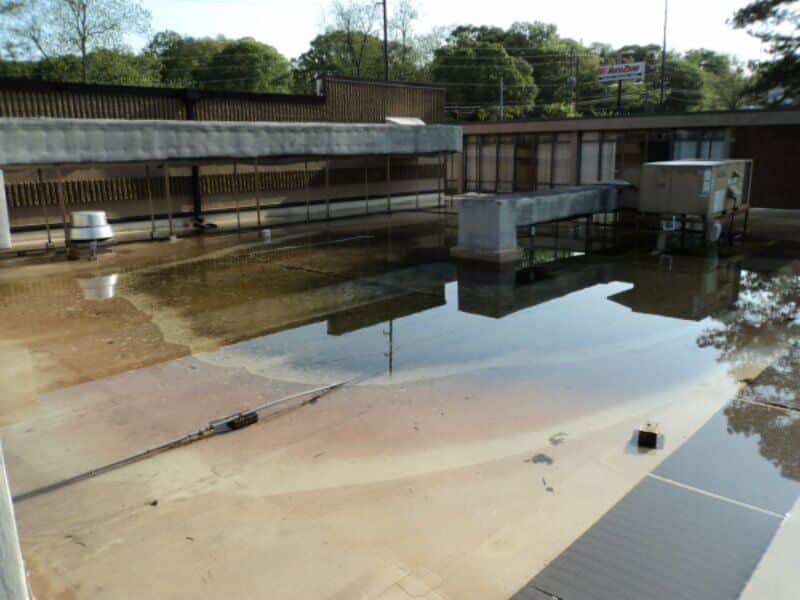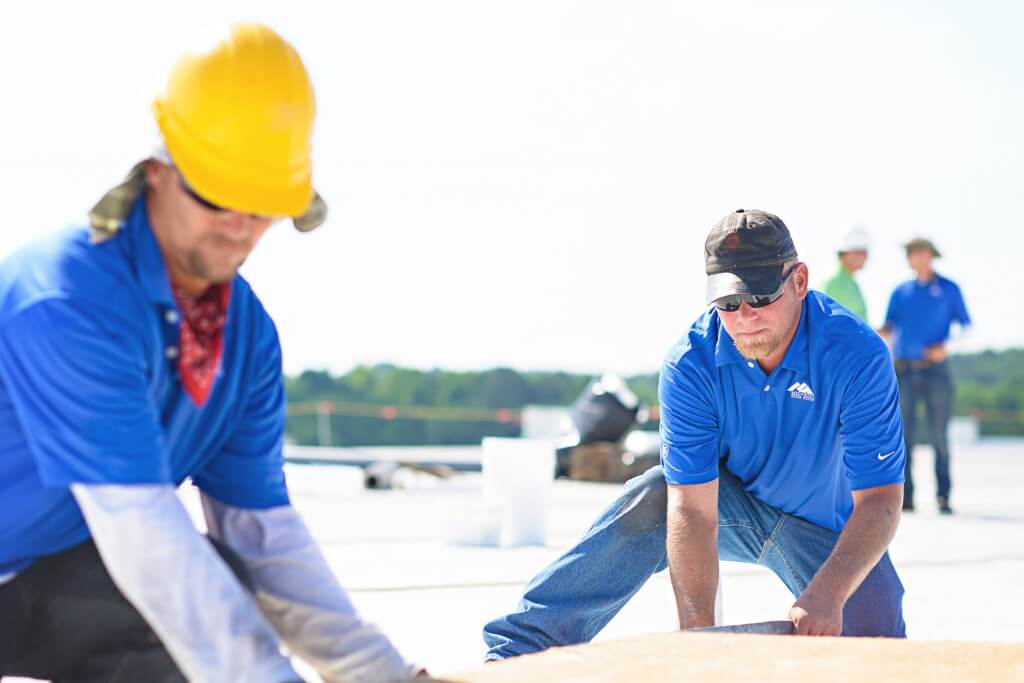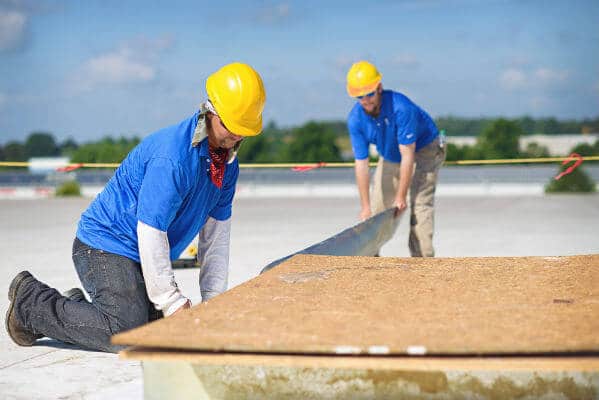Ponding Water On a Roof: When Can it Damage Your Investment and How to Resolve Common Causes


For most building owners and property managers, protecting the roof system against water penetration has major ramifications for the value of the property. Ponding is the phenomenon of water pooling on flat roofs after storms, snow melts, or heavy rains. Pools should drain away without causing any damage to the structure – but owners and managers should know when to take action, how to identify the cause of the ponding, and how to resolve it.
Ponding Water 101: When Can it Damage the Roof
Ponding water isn’t an immediate threat – in fact, roof membranes are made with the same material as pond liners, so water penetration is unlikely. Over time, however, ponding water can lead to accelerated aging of the roof membrane.
Ponding water accelerates roof system aging by:
- Degrading the roofing material itself: This is a particular concern for older built-up and modified roofs.
- Intensifying the sunlight: On modern white roofs, the water focuses the sunlight that passes through it (like a prism) and intensifies UV degradation.
- Collecting dark colored debris: Water draws dirt and debris into small puddles and these dark masses sit on the membrane after the water’s evaporated and heat up under direct sun, putting unnecessary strain on the membrane.
All roof systems should have positive drainage, which means that water should flow off the roof within two days. If water remains on the roof system after 48 hours, consider it an issue that could lead to larger problems requiring costly repairs. To resolve ponding before it damages the roof, determine the cause of the ponding and select the appropriate solution.
Root Cause #1: Crushed Insulation Causing Low Spots
When insulation becomes wet and saturated or gets crushed from extensive foot traffic, it compresses, creating an indentation in the roof system. Rainwater collects in these depressions and, if it does not evaporate quickly, can cause the aforementioned damage.
Solution: Have a qualified contractor replace the crushed insulation below the ponding water as a quick, economical fix. However, owners and managers should monitor the roof. If the water build-up simply moves to another location, this indicates a larger problem – most likely with the drainage on the roof, which may require a more complicated solution.
Root Cause #2: Building Design and Major Structural Problems
Ponding problems appear on old and new buildings alike if there are structural issues, such as irregularities created by deformed joists or beams.
Solution: Structural problems vary greatly in terms of severity. Sometimes, adding tapered insulation can resolve ponding water issues, but structural irregularities tend to signal the advent of unpredictable, challenging, and costly repairs. The only way to determine the scope of a structural problem is to seek out an experienced professional roof contractor.
Root Cause #3: Unprotected RTUs or Skylights
Certain elements on the roof are especially susceptible to ponding. Large Roof Top Units (RTUs) like HVAC units or skylights that are unprotected by “crickets” tend to be places where water collects because it cannot flow past the curb of the unit or skylight.
Solution: Installing crickets around RTUs and skylights is an easy and economical method to resolve ponding. Crickets are triangles of tapered insulation that direct water to flow around a skylight or other protrusions.
Root Cause #4: Improperly Installed Drains or Scuppers
Positive drainage moves water toward drains and scuppers – and when installed correctly, the water drains away. However, when drains and scuppers are installed incorrectly, they can actually block water from exiting, creating large pools around them. Even a slight lip can block a significant amount of water.
Unfortunately, owners and property managers must proceed with caution before attempting to resolve the issue, because in some cases, attempts to “fix” the problem exacerbate it.
Solution: When fixing ponding near drains and scuppers, one solution is to install tapered insulation to redirect the water. Another option is to lower the insulation leading to the scuppers or drains, by cutting away some of the material to encourage water to move to the exit. Sometimes, the issue can be plumbing-related if the drains are not set at the correct height in the first place.
Some of these solutions are troubleshooting methods; owners may have to apply more than one at a time. When ponding water occurs near drains or scuppers, consult an experienced contractor who can evaluate the situation, identify the real cause of the ponding, and determine the best solution.
Ponding water will not void a warranty or destroy a roof; treat it as a pressing – but not immediate – concern. All water should drain off within 48 hours, but building owners and facilities managers should monitor and analyze any water build-up that remains after that timeframe, as it can degrade the roof’s materials and lead to long-term issues. Before taking action, however, it’s crucial to determine the root cause of the ponding – because the cause directly influences which solution is the most appropriate choice, both in terms of cost and effectiveness.
LIKE WHAT YOU JUST READ?
Sign up for our newsletter to get fresh articles, updates and more!
Assess, Report and Decide: Get to Know Your New Building’s Roof
If you’re considering buying a new building, the very first item on your list should be to get an assessment of the roof’s condition. This analysis can prevent surprises down the line and—if the roof needs work—it can have a dramatic effect on the price you wind up paying for the building.
Why You Need A Roofer Onsite When You Install Your HVAC System
It’s common to place the heating, ventilating and air conditioning (HVAC) systems for large buildings on the roof. A successful rooftop HVAC installation usually involves the collaboration of an entire team of workers, so that issues related to the roof, structures, electrical and HVAC can be discussed beforehand. If an HVAC system is not coordinated…


